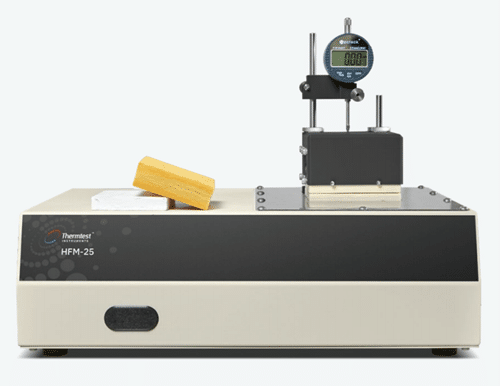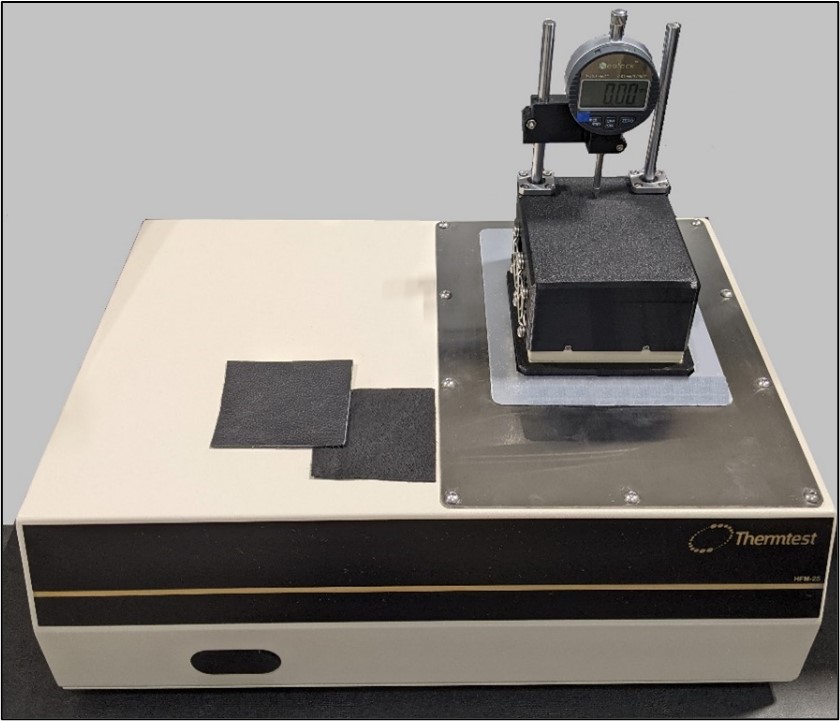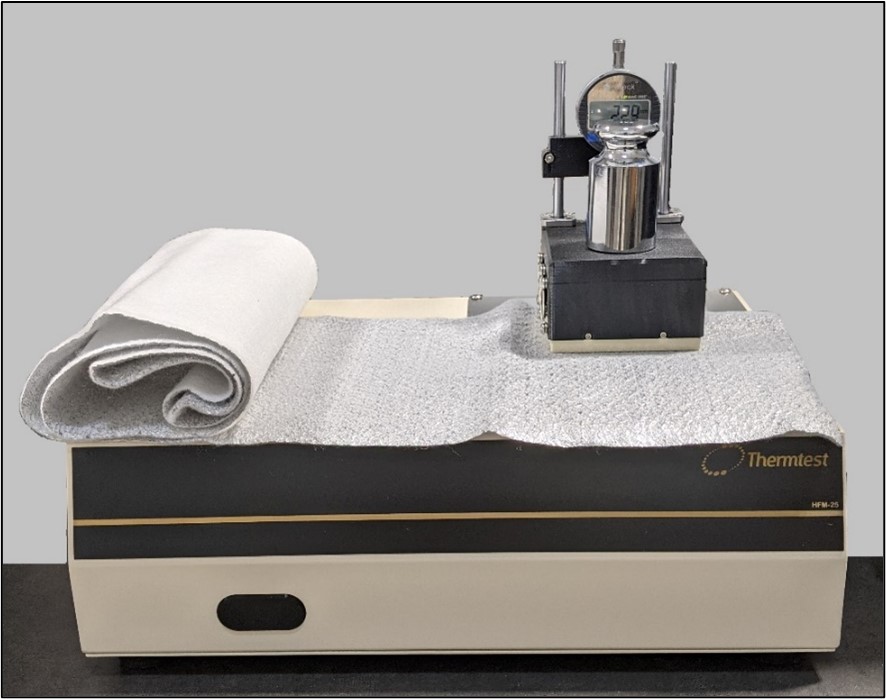Join us at the International Thermal Conductivity Conference (ITCC) and the International Thermal Expansion Symposium (ITES).
Geological
Nanomaterials
Pastes
Pastes
Polymers
The Heat Flow Meter (HFM-25) for testing thermal resistance and thermal conductivity of insulation and construction materials. Offering the testing power of a full-size heat flow meter, optimized for small insulation samples and budget. The HFM-25 is controlled by the included HFM-25 Software, offering automation of calibration, testing and results summary functions.

Picture 1. Thermtest 25 Series Heat Flow Meter.
Following international standards, the HFM-25 is designed for testing both homogenous and heterogenous materials from 0.01 to 0.3 W/m·K and complies with ASTM C518. The HFM-25 allows for smaller sample sizes which are representative of materials typically found in insulation and construction industries. With an accuracy of 3% to 5% and reproducibility of 2%, the Thermtest 25 Series Heat Flow Meter is an excellent instrument for measuring the thermal conductivity of a variety of samples.
Specially calibrated for testing of thin-insulators, the HFM-25 is well suited for testing of textiles.
For small, thin samples (min 50 x 50 mm), samples can easily be arranged for simple testing:

Picture 2. 50 x 50 mm piece of natural leather and synthetic leather.
Larger samples (unlimited L x W) can be conveniently measured at a specific location:

Picture 3. Insulating fabric sample inserted in the HFM-25.
The Heat Flow Meter HFM-25 was used to measure the thermal conductivity and thermal resistance of three different textiles. It is expected that the insulating fabric will have the lowest thermal conductivity (highest thermal resistance) compared to the natural and synthetic leathers. Thermal resistance is a measure of a sample’s ability to resist heat flow and is relevant for textiles in the case of choosing material to make a jacket. For the experiment, the upper plate of the HFM-25 was set to 35°C and the lower plate was set to 15°C, obtaining an optimal temperature delta of 20 degrees.
Table 1: Thermal conductivity and thermal resistance measurements of three textiles with the Thermtest HFM-25 at room temperature.
| Sample | Average Thermal Conductivity (W/m·K) |
Average Thermal Resistance (m2·K/W) |
Relative Standard Deviation (%) |
|---|---|---|---|
| Synthetic Leather | 0.0479 | 0.0150 | 0.12 |
| Natural Leather | 0.0598 | 0.0274 | 0.45 |
| Insulating Fabric | 0.0344 | 0.0581 | 0.27 |
Number of tests = 3